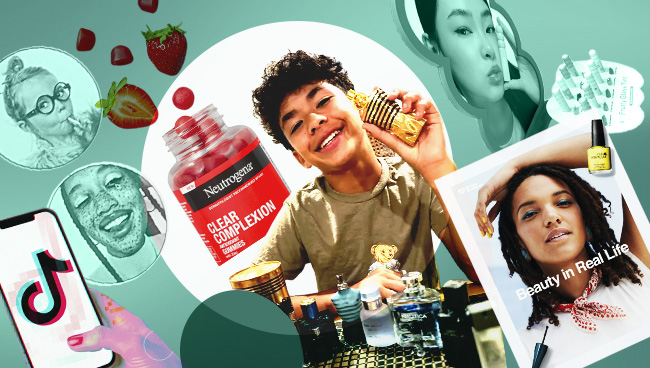After our recent travels to explore the latest in beauty, WSL Strategic Retail’s experts returned to NYC impressed by the category’s resiliency in this time of chaos. Here are seven examples of what beauty can show other business (categories and retailers) in order to grow.
Is the ‘Lipstick Effect’ Still Viable During Economic Chaos?
The tube of lip color may still be a recession-proof standard, but to hold up in the midst of the economic and social chaos we live in now, it needs a bit of dressing up. This was evident to our WSL Strategic Retail team leaders, including CEO and Chief Shopper Wendy Liebmann, Elia Auchane and Crysta Urata, while on the road researching some of the biggest trends in the retail category.
Several prominent themes we witnessed, including at the recent Cosmoprof Beauty conference in Las Vegas, revealed that the beauty category can be a solid predictor of important retail trends that other categories can expect to see soon.
Take these data points gathered from the event that can apply to all categories, not just beauty:
- 40% of mass beauty shoppers are spending on prestige – this can extend beyond beauty, so don’t pigeonhole.[1]
- 68% of beauty consumers trust AI more than traditional marketing – this trust issue must be addressed.[2]
- The blurring of beauty and wellness categories has expanded the market by 36% – and wellness can be applied everywhere.[3]
- Women older than 40 are more likely than women younger than 40 to believe higher-priced beauty and care products deliver better. Why not other categories, as well?
And, as Liza Rapay, vice president of Cosmoprof NA and founder of the platform “Beauty New York,” told WSL’s Wendy Liebmann in a recent Future Shop podcast : “When you look at beauty now, it’s very hyper personalized, right? … It’s not just launching a product you need. These brands really need to stand for something. Become bigger.”
A Beautiful Lens to the Navigating the Chaos for All Categories
Based on the product innovations, conversations and demographic targeting we’ve recently seen firsthand, the beauty market can serve as a useful lens through which other categories and retailers should view their own next.
The seven themes that stuck with us are…
Theme 1: The TikTok effect is an alarm.
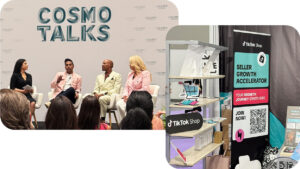
All brands and retailers should monitor TikTok Shop for behavioral trends that can be transposed to other categories. Eight in 10 TikTok users say they had discovered a new product from a brand they already knew on the platform, according to Ajay Salpekar, head of TikTok Beauty, in a Cosmoprof panel titled “Scroll-Stopping Beauty.” The panelists said TikTok Shop bridges content and commerce faster than any other platform, and thrives when shoppers don’t know what they’re looking for.
- The takeaway: Impulse and exploration are not beauty-specific tendencies; brands often bask in the halo effect of what’s trending on TikTok and merchandise their own goods in it.
Theme 2: Playing up the very young.

Brands are abuzz about the opportunity in Gen A and younger. Graduates from FIT’s Cosmetics and Fragrance Marketing and Management master’s program revealed in their Capstone research that Gen A invested $14 billion in beauty in 2024, with some users starting skincare at as young as 6 years. With such early adoption, this generation potentially represents the longest-lasting shopper relationship for beauty brands.
- The takeaway: Remember the end user is not always the shopper. At Cosmoprof, we saw a wave of new haircare and skincare brands made just for pre-teens with gentle ingredients and fun packaging – but with parents in mind.
Theme 3: More beauty is donning a lab coat.
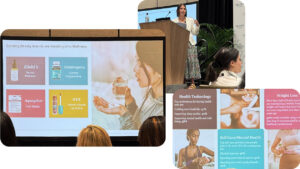
Beauty and healthcare are purposefully blending, with the goal of preserving longevity, providing medicinal-grade comfort and bottling up specialized skin procedures. As our Crysta Urata, Marketing and Visual Content Designer at WSL, observed, “We’re moving away from ‘treating myself’ to ‘optimizing myself.’” Students from FIT predict what’s next based on this trend: Aesthetic ateliers – one-stop destinations where diagnostics, supplements, skincare and treatments integrate seamlessly.
- The takeaway: Gen X and Millennials – who now are legitimately middle-aged – are the most engaged in the beauty-as-healthcare movement, inspiring traditional beauty brands to tinker in wellness, and vice-versa. We’ve seen examples by Kiehl’s, Aquaphor, Neutrogena and NYX Cosmetics.
Theme 4: Beauty is taking young men more seriously.
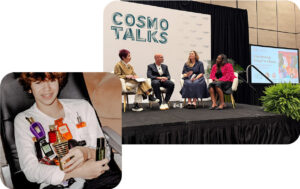
A noteworthy portion of conversations at Cosmoprof centered on young men, including Gen A, showing up strong in fragrance and body care. This extends to prestige: Teen boys spent 26% more on status fragrance year-over-year. Traditional gender guardrails around beauty are diminishing, explained Ulta’s vice president of merchandising, Jessica Phillips, at WSL’s panel, “How America Shops® in Chaos.”
- The takeaway: Boys are choosing brands that connect with them regardless of whether the brands are marketed “for men.” This thinking can apply across other categories, and while men are getting more attention in beauty as well, boys stand to deliver higher lifetime value.
Theme 5: Dupes are out, and in.
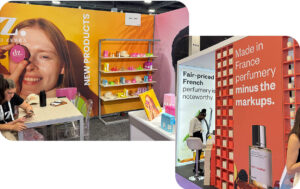
Four in 10 mass beauty shoppers might buy prestige, but low-priced dupe brands are capturing the prestige market. Dupes are proudly in the open today. Among the exhibitors at Cosmoprof: Dossier (known for dupe fragrances) and an Australian replica of Drunk Elephant called Dotted Zebra. Even CVS Health’s Executive Director and Divisional Merchandising Manager of beauty, Selena Cox, mentioned the role of dupes in defining prestige and self-care.
- The takeaway: In times of economic chaos, affordable alternatives will capture broader attention. Dupes – once a Gen Z-specific trend – are now mainstream across age groups, likely owing to parents and younger siblings catching on.
Theme 6: Seek inspiration from Korea.
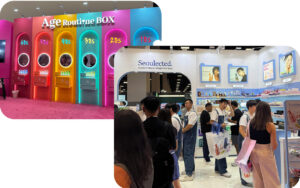
Three words, “Made in Korea,” are becoming the gold standard in beauty technology and effectiveness. More than 250 Korean beauty brands and suppliers were featured at Cosmoprof. The beauty and wellness brand Olive Young cut a strong presence ahead of its first U.S. store opening, scheduled for Los Angeles in 2026. Charlotte Cho, co-founder of Soko Glam, the Korean skincare said Korea is now home to more than 30,000 beauty brands.
- The takeaway: Korean beauty brands are innovating in daring ways including their storytelling. That’s a lot of competition heading to our shores that it will likely expand (think young men, health and diet).
Theme 7: Don’t forget the role of the store.
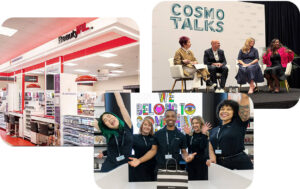
This theme comes courtesy of WSL. As made clear in our “How America Shops® in Chaos” research, while brick and mortar can’t match TikTok’s speed, the physical store can offer joy, experience and the irreplaceable “human touch.” And it’s worth noting that 78% of the lucrative Gen A beauty market base shops in physical stores, according to the FIT graduate students.
- The takeaway: In times of chaos, shoppers want to see a welcoming, friendly face that makes them feel everything is OK.
Our Further Takeaways: Influence and Lost Opportunities
What’s missing from the discussion these days? Older consumers still barely get a mention (except in our research…) . And disappointingly, almost no one at Cosmoprof talked about sustainability. Given the size of the beauty industry’s waste footprint and climate change’s effect on shopping behavior, this blind spot can be a costly missed opportunity.
The resilient face of beauty can be a precursor of what to expect next in all retail categories, it’s important to note that not every trend is worth chasing. Listen and respond to what your customers want, not what you want.
To read how the retailers Miniso, Anthropolgie and Five Below are integrating beauty into lifestyle patterns and preferences, click here to access our June Retail Safari® newsletter “Beauty is Braking Out!” and photo library.


